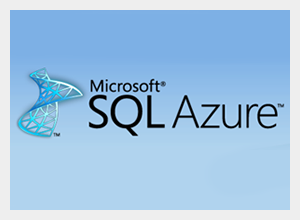 In our previous post we looked at the different options in Windows Azure storage. Now we turn our attention to SQL Azure, a relational database management system for the cloud which offers:
In our previous post we looked at the different options in Windows Azure storage. Now we turn our attention to SQL Azure, a relational database management system for the cloud which offers:
- Features needed to perform transactions.
- Indexes, views, triggers, and stored procedures.
- Easy migration for applications that use SQL Server locally to the cloud
- Access for on-premises software to use SQL Azure
There are several ways for subscribers to connect to SQL Azure including:
- ADO.NET
- PHP
- ODBC
Normally all it takes is changing the connection string when you relocate your data to the cloud. Either applications located on the cloud (near code) or on-premises (far code) can connect with a cloud database. Data is accessed via the Tabular Data Stream (TDS) protocol over TCP/IP which is the same method used when connecting with a local SQL Server database.
SQL Azure has built in security which restricts database access to particular range of IP addresses. Only expected IP addresses are accepted.
To begin using SQL Azure you can open an account at sql.azure.com. Each account is allowed one or more logical servers which can be made up of multiple physical servers within a geographical location. And each logical server and contain one or more databases which are replicated and partitioned across multiple servers. A database can be created from the web portal through the SQL Azure server administration interface. Or the SQL Server Management Studio can be used to create databases and additional elements.
Our next post in this series will examine subscription and billing for Windows Azure.
